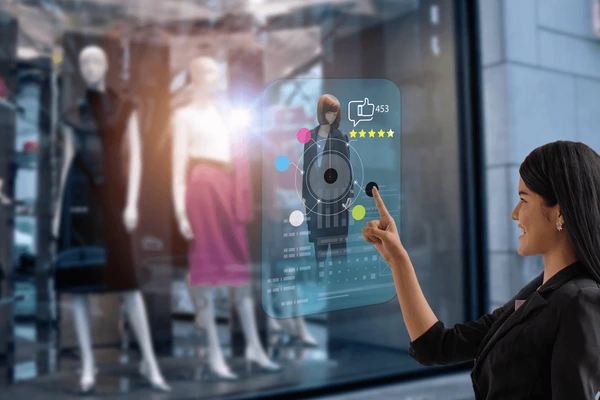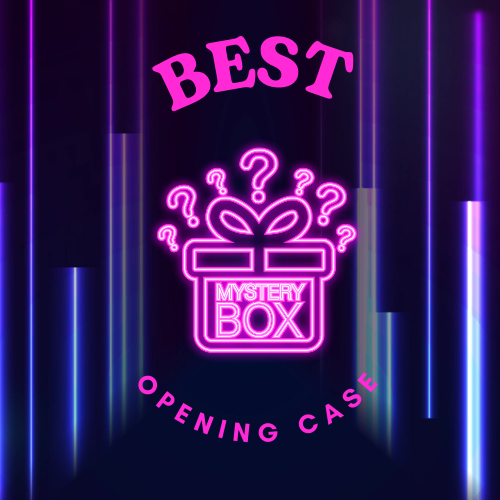
The phenomenon of mystery boxes, once largely confined to the digital realm, has begun to infiltrate the physical retail space. This shift is not just a passing trend but a significant evolution in how consumers engage with brands and products. The inherent allure of mystery, combined with the tangible experience of in-store shopping, creates a potent blend of excitement and interactivity. Physical retail stores are recognizing the value of these surprise-driven experiences and are adapting accordingly, seeking to merge the thrill of unboxing with the sensory satisfaction of browsing and purchasing in person.
The evolution from digital to physical
Initially, mystery boxes gained popularity through online platforms, where algorithms and curated selections promised consumers surprise items at discounted rates. As this concept matured, it became apparent that the core appeal—curiosity, suspense, and the chance of high-value rewards—could also resonate in physical retail. Retailers began to experiment with in-store mystery boxes, offering sealed packages with varying content at fixed price points. This move served not only to drive impulse purchases but also to reintroduce novelty into traditional brick-and-mortar environments, which have struggled to compete with the convenience of e-commerce.
Consumer engagement through sensory stimulation
One of the key advantages of bringing mystery boxes to physical retail lies in the sensory experience. Online, the mystery is visual and conceptual, but in stores, it becomes tangible. Consumers can pick up the box, feel its weight, and imagine its contents, which heightens anticipation. Retailers capitalize on this by using enticing packaging, strategic product placement, and themed displays. Some even incorporate elements like scent or sound to deepen the experience. This immersive environment encourages spontaneous purchases and helps retailers foster a stronger emotional connection with their customers.
Localized themes and cultural relevance
Physical retail locations also benefit from the ability to customize mystery boxes based on regional preferences and cultural trends. For example, a store in Tokyo might offer anime-themed boxes, while a retailer in Paris might focus on luxury skincare. This localization enhances relevance and appeals to niche communities, making the mystery box experience feel more personal and curated. By tapping into local culture, retailers can foster a deeper connection with their customer base and encourage repeat visits.
Collaborations and exclusive partnerships
Many retailers leverage mystery boxes to showcase collaborations with brands, influencers, or artists. These exclusive partnerships drive foot traffic and generate buzz, as consumers seek out limited-edition or collectible items. Pop-up events and in-store promotions often accompany such releases, transforming a simple product purchase into an event. Retailers benefit from increased exposure and customer loyalty, while consumers enjoy the exclusivity and novelty of their finds. These collaborations often involve careful curation to ensure the contents align with the brand’s identity and the expectations of its audience.
Gamification and interactivity in-store
To replicate the gamified nature of online mystery boxes, many physical retailers integrate interactive elements into the shopping experience. This could include spin-the-wheel stations, tiered mystery box levels, or QR codes that reveal hints about the box’s contents. These elements not only enhance engagement but also create a sense of play and competition. Shoppers are more likely to share these experiences on social media, further amplifying the store’s reach and appeal. The gamified experience is particularly effective in attracting younger demographics who are accustomed to interactive digital environments.
Strategic placement and impulse buying
Retailers strategically place mystery boxes near checkouts or high-traffic areas to encourage impulse buying. Their eye-catching design and relatively low price point make them an attractive last-minute addition to a purchase. This tactic has proven successful in boosting average transaction values and clearing inventory in a way that feels rewarding rather than discount-driven. Some stores also rotate the themes or availability of mystery boxes weekly or monthly to maintain interest and urgency.
Building brand loyalty through surprise
The element of surprise plays a crucial role in deepening brand loyalty. Customers who have a positive mystery box experience are more likely to return, driven by both the memory of past satisfaction and the anticipation of future rewards. Retailers often use mystery boxes as part of a broader loyalty program, offering exclusive boxes to frequent shoppers or using them as redemption items for reward points. This strategy strengthens the customer-retailer relationship and encourages continued engagement beyond the initial purchase.
Leveraging seasonal and event-based themes
Mystery boxes are particularly effective when tied to seasons, holidays, or special events. During Halloween, for example, boxes may include themed decorations, costumes, or treats. During the winter holidays, they might focus on giftable items or festive surprises. This temporal relevance creates a sense of urgency and relevance, prompting consumers to purchase within a limited time frame. Retailers often integrate these themes into their overall store decor and marketing efforts to create a cohesive and festive shopping environment.
Overcoming the limitations of traditional retail
One of the challenges facing brick-and-mortar retailers is maintaining consumer interest in a static inventory. Mystery boxes introduce variability and excitement without requiring constant product updates. They also help retailers move overstocked or seasonal items in a way that feels novel rather than like a clearance sale. Moreover, by packaging products in new and unexpected ways, stores can revitalize older merchandise and present it to consumers with a fresh perspective.
Transparency and trust in physical retail
Unlike online platforms, where mystery box content and odds are often unclear, physical retail has the opportunity to build trust through transparency. Some stores include hints, weight indicators, or partially transparent packaging to offer clues without fully revealing contents. Others may use signage to indicate the types of products included, such as « Beauty Mystery Box » or « Gamer Edition, » giving shoppers a general idea of what to expect. This level of transparency helps manage customer expectations while preserving the thrill of surprise.
Integrating technology to enhance experience
To bridge the gap between online and offline experiences, many retailers incorporate technology into their mystery box offerings. Augmented reality features, NFC tags, or digital scavenger hunts guide customers through the store, adding layers of interactivity. Some retailers even offer digital rewards or access to online content as part of the mystery box experience. These tech-enhanced features cater to the digital-native consumer and create a seamless blend of online and offline engagement.
Mystery boxes as marketing tools
Beyond direct sales, mystery boxes serve as powerful marketing tools. They generate word-of-mouth buzz, especially when customers unbox them on social media. This user-generated content functions as authentic advertising and can significantly boost a store’s visibility. Some retailers encourage this by creating designated unboxing areas in-store or offering incentives for sharing unboxing videos. The combination of curiosity, surprise, and community participation creates a marketing loop that continually feeds itself.
Appealing to a broad demographic
Physical mystery boxes have a wide demographic appeal. Children are drawn to the playful packaging and surprise elements, while adults enjoy the sense of value and discovery. Retailers often tailor the box themes and price points to different age groups and interests, from tech gadgets and toys to wellness products and gourmet treats. This inclusivity allows mystery boxes to serve as versatile tools for engaging a diverse customer base.
Challenges and considerations for retailers
Despite their popularity, mystery boxes present logistical and ethical challenges. Retailers must carefully balance value, variety, and profit margins to ensure customer satisfaction. There is also the risk of disappointing contents, which can lead to returns or negative reviews. Clear communication, quality control, and thoughtful curation are essential in maintaining consumer trust. Additionally, retailers must navigate local regulations regarding packaging, product safety, and promotional disclosures.
The future of mystery boxes in physical retail
As retail continues to evolve, mystery boxes are likely to become a permanent fixture in physical stores. Their ability to generate excitement, boost sales, and foster loyalty makes them a valuable tool in the modern retailer’s arsenal. With continued innovation in packaging, technology, and customer experience, the line between online mystery box culture and traditional retail will continue to blur. This hybrid model not only revitalizes physical stores but also redefines how consumers interact with products and brands in a tactile, emotionally engaging way.
